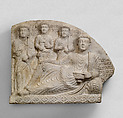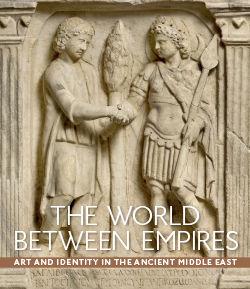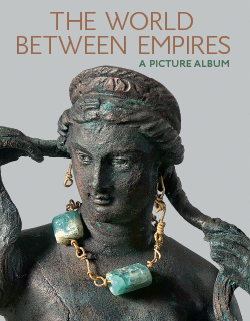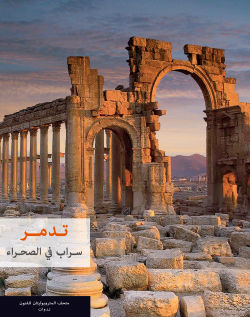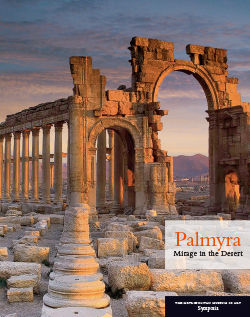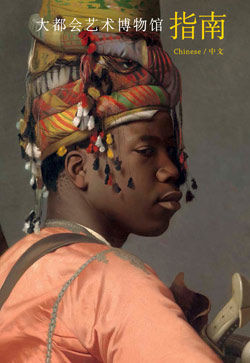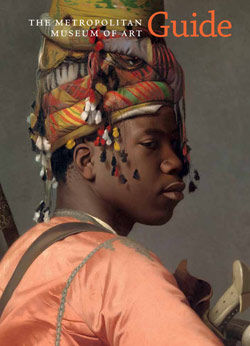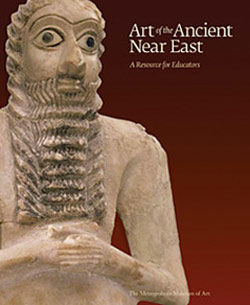Funerary relief
Not on view
Inscription:
(On left of reclining male figure)
1 Zabdibol,
2 son of Mokimu,
3 son of Nurbel,
4 son of Zabda,
5 [so]n of ‘Abday,
6 (son of) [Zabdi]bol.
(By girl on right)
1 Tadmur,
2 his daughter.
(By head of boy)
1 Mokimu,
2 his son.
(By girl on left)
1 ‘Alayyat,
2 his daughter.
Transliteration:
1 zbdbwl
2 br mqymw
3 br nwrbl
4 br zbdʾ
5 [b]r ʿbdy
6 [zbd]bwl
1 tdmwr
2 brth
1 mqymw
2 brh
1 ʿlyt
2 brth
This sculpture in high relief shows full-length figures of a man, his son, and two daughters. It is a gravestone depicting a banquet scene that probably sealed the opening of a family burial niche in Palmyra. The man is reclining on a richly decorated couch, holding a palm spray or cluster of dates in his right hand and a cup in his left. The two daughters wear veils, necklaces, and earrings. The son wears a necklace and holds grapes in his right hand and a bird in his left. It bears a Palmyrene Aramaic inscription giving the names of each of the deceased and five generations of their paternal ancestors.
By the mid-first century A.D., Palmyra — or "place of the palms"—was a wealthy and impressive city located along the caravan routes that linked the Parthian Near East with Roman-controlled Mediterranean ports. During the period of great prosperity that followed, the citizens of Palmyra adopted customs and modes of dress from both the Iranian Parthian world to the east and the Greco-Roman west. This blend of eastern and western elements is also present in Palmyrene art. In this sculpture, the care lavished on details of dress and jewelry recalls the Parthian approach to figural representation while the postures and the distinct sense of volume conveyed by the carving in high relief are Greco-Roman in style.
Large-scale funerary structures were common in Palmyra. Vaults, some of which were belowground, had interior walls that were constructed to form burial compartments in which the deceased, extended full length, were placed. Sculpted limestone reliefs depicting the deceased and often carrying an Aramaic inscription giving the subject’s name and genealogy represented the "personality" or "soul" of the person. These were constructed as markers for eternity much like modern gravestones and mausoleums.
Adapted from, Art of the Ancient Near East: A Resource for Educators (2010)
#7031. Gravestone with funerary banquet
Due to rights restrictions, this image cannot be enlarged, viewed at full screen, or downloaded.
